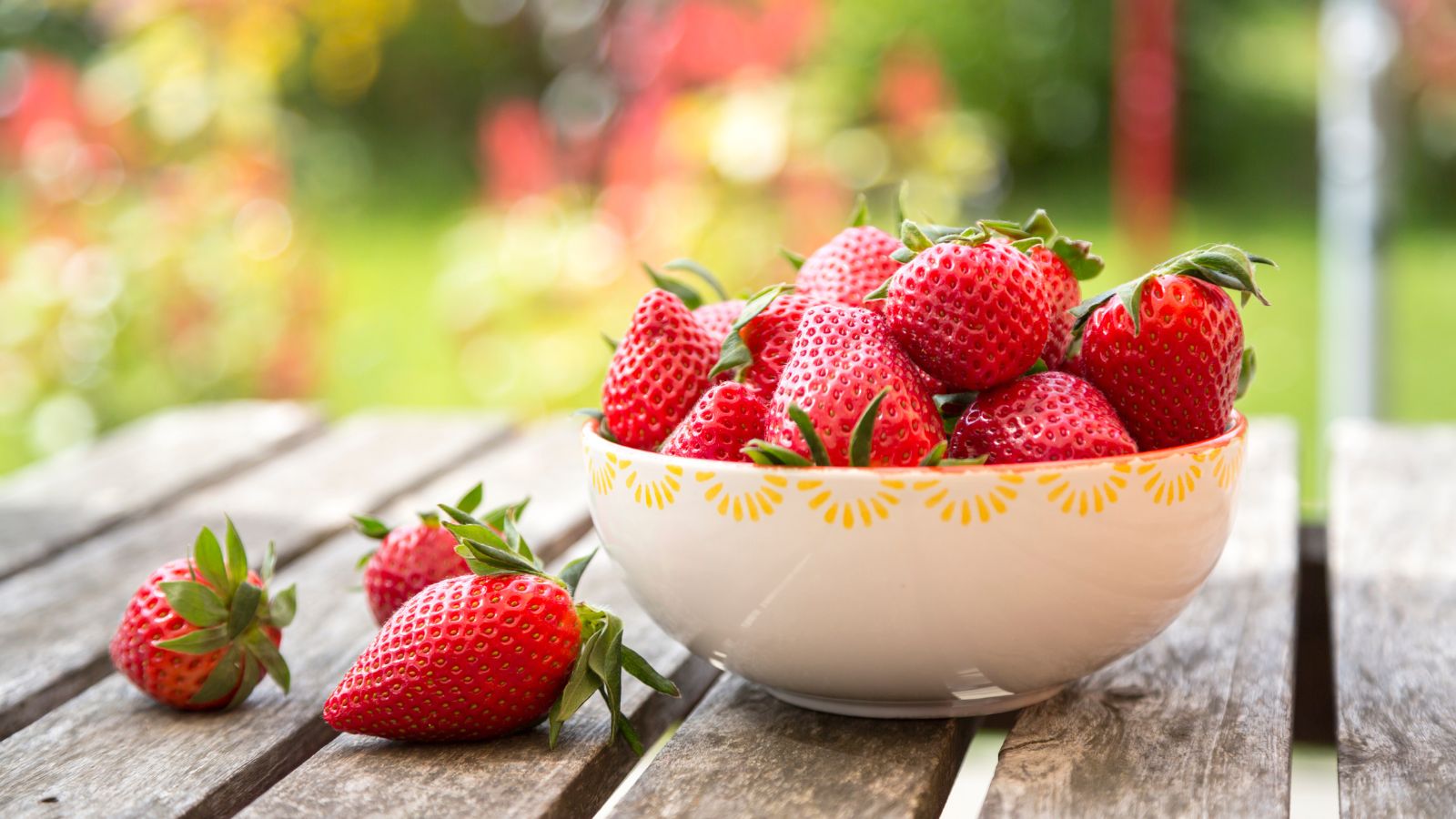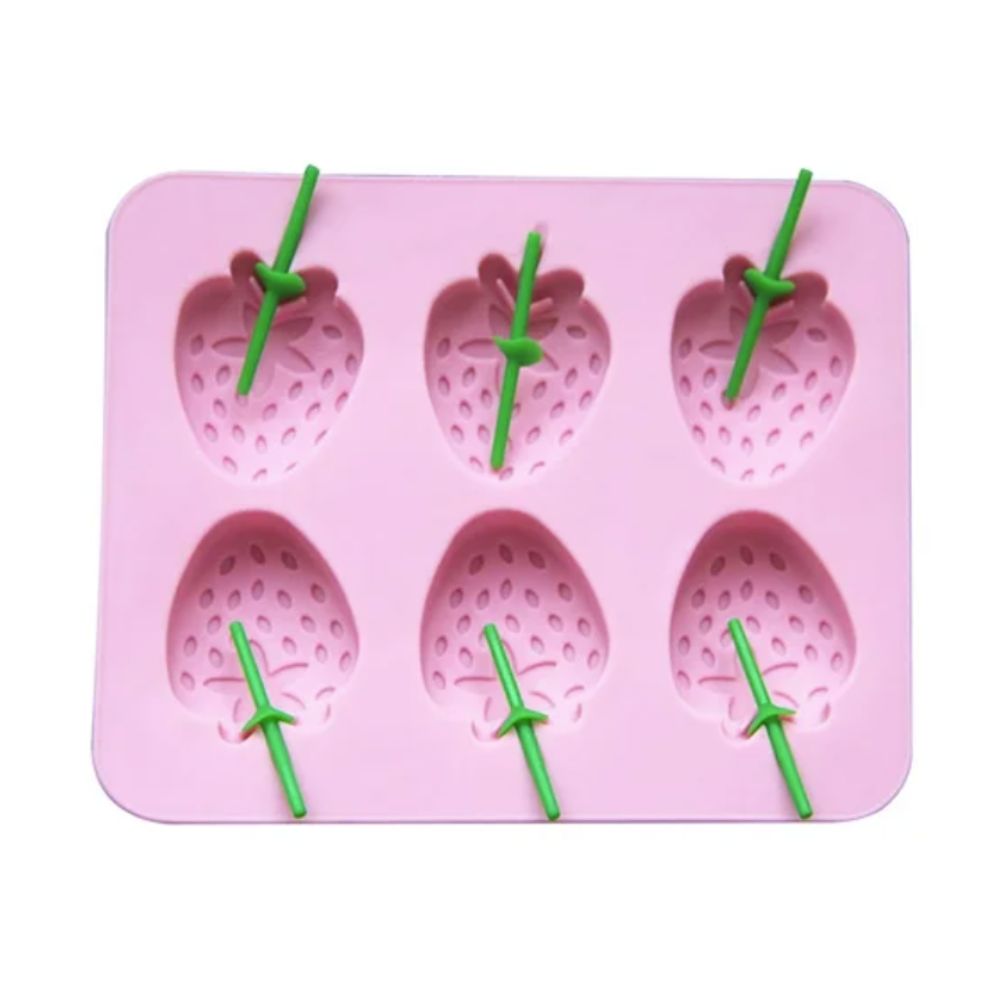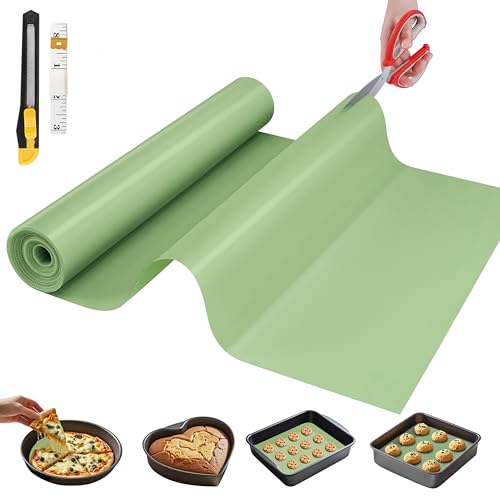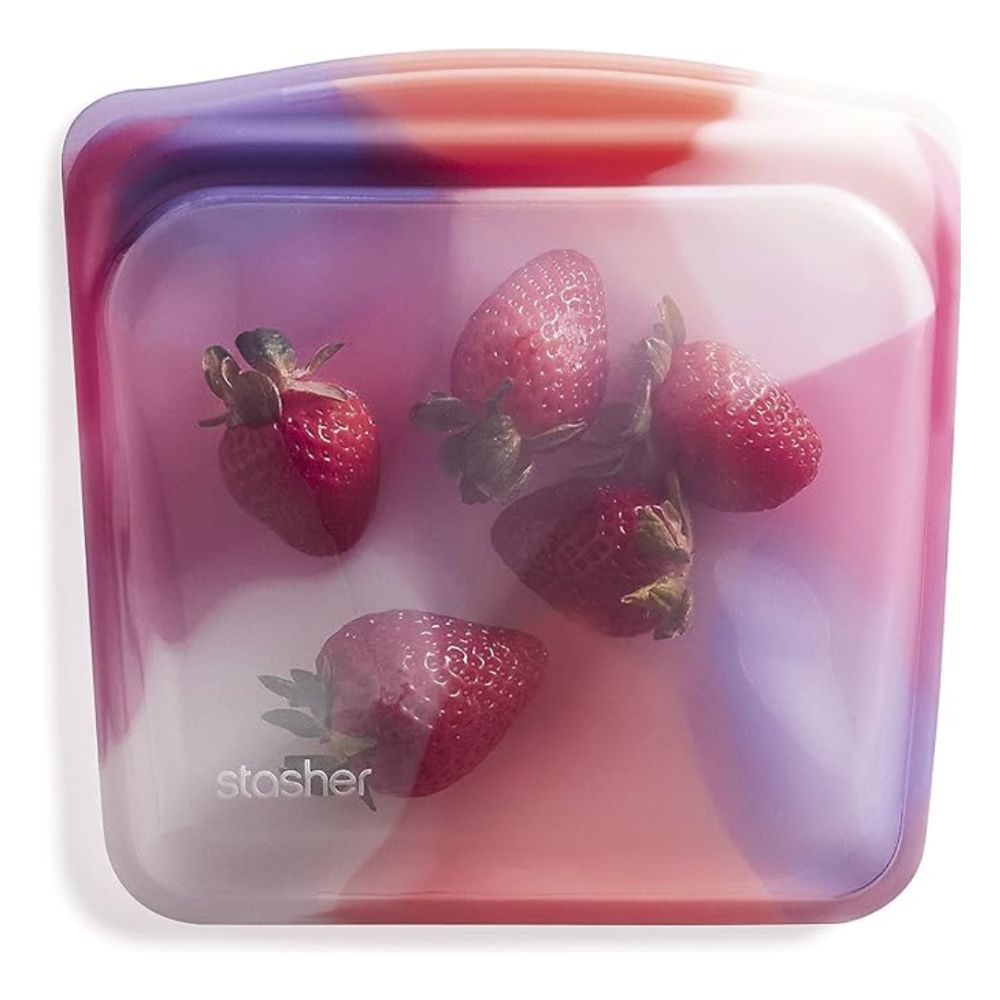Keeping strawberries in the freezer can preserve this sweet and juicy summer treat so you can enjoy them well after the season has passed
It is possible to retain the color and flavor of fresh strawberries with these easy tips for freezing them


Strawberries are one of my favorite things about summer. Sweet, juicy and full of flavor at this time of year, this seasonal jewel is so versatile and delicious.
My partner and I recently began growing our own strawberry crop and there's something so special about picking your own and devouring them straight from the plant. But, if you end up with a glut, even the daily smoothies and breakfast bowls won't be enough to use them up before they're past their best.
What I didn't know was that you can preserve them for longer than you might think. Whether you're growing your own, picking them from a local farm or purchasing them from the store, learning how to freeze strawberries correctly can help you to lock in their flavor and enjoy them long after their best-before date.
I talked to strawberry growers and experts in freezing and cooking to find out the best tips and tricks for freezing strawberries. I recommend organizing a chest freezer before trying them out to ensure you have plenty of space for all of your frozen goods
1. Freezing whole strawberries
Freezing strawberries in their whole form is ideal for portioning into dishes or packing for a picnic. It's my favorite way to freeze them as it's quick, convenient, and the berries remain in their original form.
Jodi Reinman of The California Strawberry Commission, says, 'To freeze strawberries in their whole form, simply rinse and dry, optionally remove the stems, and allow the berries to individually freeze on a sheet of parchment paper before transferring them to a freezer-safe container or bag.'
It's important to make sure your berries are as dry as possible before freezing at a consistent temperature, otherwise they are more likely to stick together or spoil. I learned this the hard way after having a whole bag of mine come out as a giant strawberry clump.
Design expertise in your inbox – from inspiring decorating ideas and beautiful celebrity homes to practical gardening advice and shopping round-ups.
Suzanne Krieger of SECooler freezer company seconds how vital this is, adding, 'One of the most important things we focus on at SECooler is maintaining the right temperature to preserve food quality, especially for products like frozen vegetables and fruits, which are particularly sensitive to temperature swings.'
Giving the berries a few rounds in the Faberware Salad Spinner from Walmart and patting them with paper towel, then keeping a consistent eye on your freezer temperature should have you covered.
2. Freezing sliced strawberries
Strawberry slices are great for garnishing salads, yogurt bowls and desserts such as our meringue stack with summer berries and vanilla ice cream. I alsp like to use sliced strawberries in baking, and leftover pieces usually find their way into smoothies or desserts, like this summer berry and roast rhubarb compote.
There's nothing worse that trying to pry apart stuck-together pieces of sliced strawberry though. Justine Reichman, founder of NextGen Purpose, an organization that strives to improve access to quality food and better-for-you food systems, says, 'Sliced strawberries that stick together can be difficult to use, so it's necessary to individually freeze your slices first. To do this, take your sliced up strawberry pieces and put them onto parchment paper to freeze for up to to three hours before placing into a freezer bag or container. Make sure there are barriers between your slices or adequate space to keep them apart, as any that are touching will freeze together.'
According to Justine, berries frozen in this way will be good to eat for 8 months to a year. But it's best to enjoy your strawberry slices within 6 months for optimal flavor.
3. Freezing mashed strawberries
Even thinking about the scent and silky texture of mashed strawberries makes me want to reach for the punnet in my fridge. Ideal for drizzling onto ice cream, stirring into batters or snacking for little ones, having a stock of mashed strawberries in your freezer won't go unappreciated in the house. What's more, you can customize how mashed your strawberries are for different uses, from lightly mashed to a juicy sauce.
Jason Wrobel, a graduate of the Living Light Culinary Institute with certification in handling and instructing others on raw food, says, 'Mashing strawberries lightly before freezing allows you to quickly use them in sauces, syrups, or smoothie bases. Simply mash gently with a fork or potato masher, spoon into freezer-safe containers or ice cube trays for portioning, leaving a little headspace, seal, and freeze. This method captures peak-season sweetness and preserves it for versatile culinary uses.'
I like to freeze my mashed strawberries directly into popsicle moulds, like the Tovolo Groovy Pop Moulds (Set of 6) from Wayfair for a healthy summer treat. If I'm feeling fancy and want to make the popsicles look prettier, I slot in a few slices around the edges so they show on the outside.
4. Freeze strawberries into ice cubes
If you're looking to elevate your summery drinks, adding diced or prettily sliced strawberries into your ice cubes will certainly do the trick. I love how simple it is to do and how the ice can be used in all kinds of beverages, from cocktails to water.
'They make delightful, flavorful additions to beverages' says Jason. 'To do this, place small strawberry pieces or slices into ice cube trays, fill them with water or juice, and freeze until solid. These cubes elevate water, lemonade, cocktails, or even sparkling wine, making beverages visually appealing and flavorful.'
The FIFOKICHO Large Ice Cube Tray from Walmart is a great choice to use as it incorporates an easy-release feature, so you can pop out the ice cubes with just one press. In the past I've battled with removing ice from traditional ice cube trays, so I'm considering making the switch.
5. Freezing cooked strawberries
Last summer I made a fruit coulis for the first time, and now I crave it with ice cream or warm pancakes. Strawberry jam is next on my list.
Preserves and coulis typically begin by breaking down strawberries in a saucepan until they reach the desired texture. Giving them a whirl in one of the best blenders will create a smoother texture. Then add in equal parts sugar for jam, and opting for either sugar or icing sugar with a hint of lemon juice for a coulis.
'Cooking strawberries to make jam or coulis before freezing intensifies their flavor,' says Jason. 'All you need to do is prepare your jam or preserves, allow them to cool down completely, then store them in small, freezer-safe jars or containers. It's best to label each jar with dates, and freeze for ready-to-use bursts of strawberry flavor in pastries, desserts, or morning toast.'

This ice cube tray is perfect for a bit of summer fun. Add to drinks for garden parties or use them to freeze whole strawberries, then pop them out to eat semi-frozen with the green picks.

Whether you're looking to freeze your strawberries before bagging them up or to cover your frozen berries in a layer of chocolate, putting them on a silicone baking sheet will ensure they don't stick. Plus, the sheets are reusable, which I love as it's environmentally-friendly.

These high-quality silicone food savers come in loads of colors, making them easy to identify in the freezer, plus they are dishwasher and microwave safe as well as leak proof.
Freezing strawberries FAQs
What should you do if your frozen strawberries stick together?
If your strawberries stick together, there's a simple way to try break them apart without pulling and prying. 'Gently bang the bag or container your strawberries are in against the counter or use a utensil to loosen them, like a fork or knife,' suggests Jason. 'You can prevent sticking by ensuring your berries are thoroughly dry before initial freezing.'
This will be easier to do if you grow bigger strawberries as there will be fewer stored together in a bag or container, so less chance of them sticking together.
Will defrosted strawberries turn mushy?
Strawberries that have been frozen and thawed are typically softer than fresh berries, though they still taste great and are still great to use in recipes.
'Thawed strawberries naturally become softer and juicier due to the breakdown of cell walls during freezing,' says Jason. 'While this slight mushiness is perfect for sauces, smoothies, and baking, you can minimize it by thawing strawberries slowly in the refrigerator or using them while they are still partially frozen.'
If you're eager to start growing your own, make sure you know when to plant strawberries. You can even grow strawberries from a strawberry instead of seeds or a starter plant. It's another great way to use up surplus fruit, too.

Ciéra is a writer and regional laureate with particular passions for art, design, philosophy and poetry. As well as contributing to Homes & Gardens, she's an Editorial Assistant for Design Anthology UK and a contributing writer for magazines including Livingetc, Apartment Therapy, House Beautiful and Ideal Home. Previous commendations of hers include being Highly Commended by The Royal Society of Literature and receiving a prestigious MA Magazine Journalism scholarship to City, University of London.
You must confirm your public display name before commenting
Please logout and then login again, you will then be prompted to enter your display name.